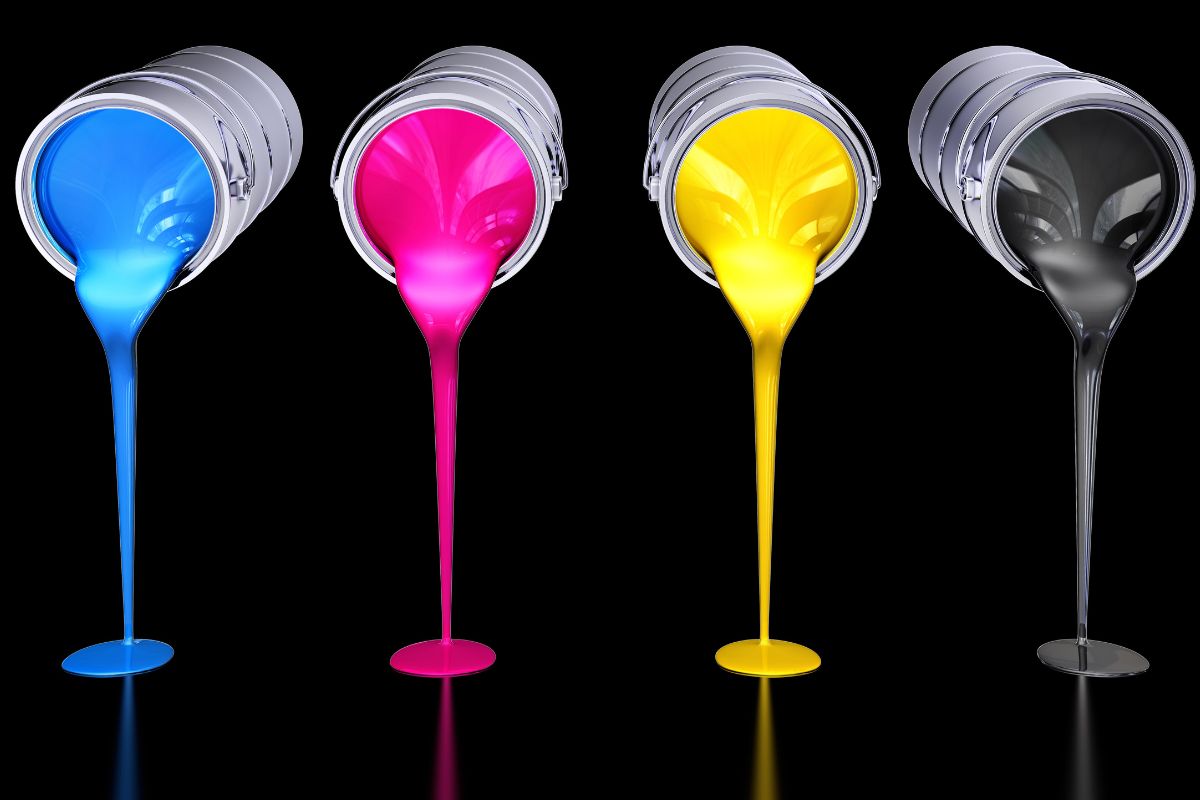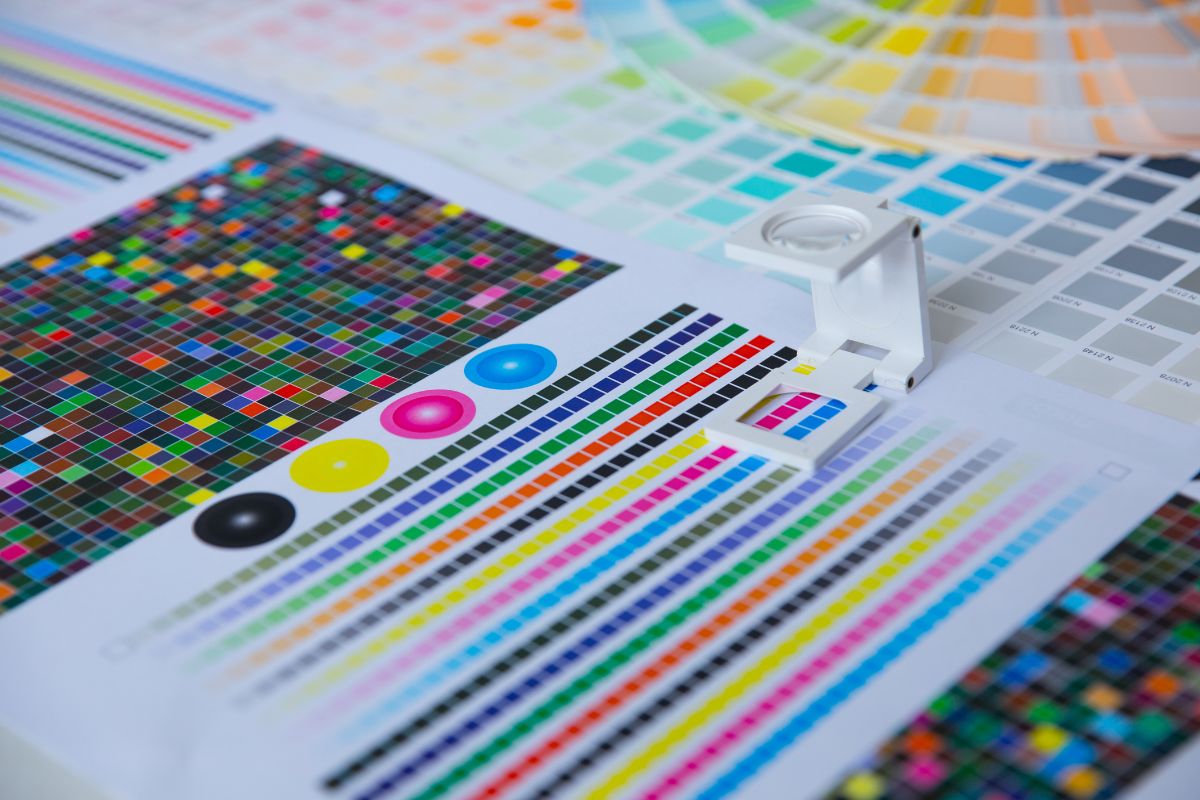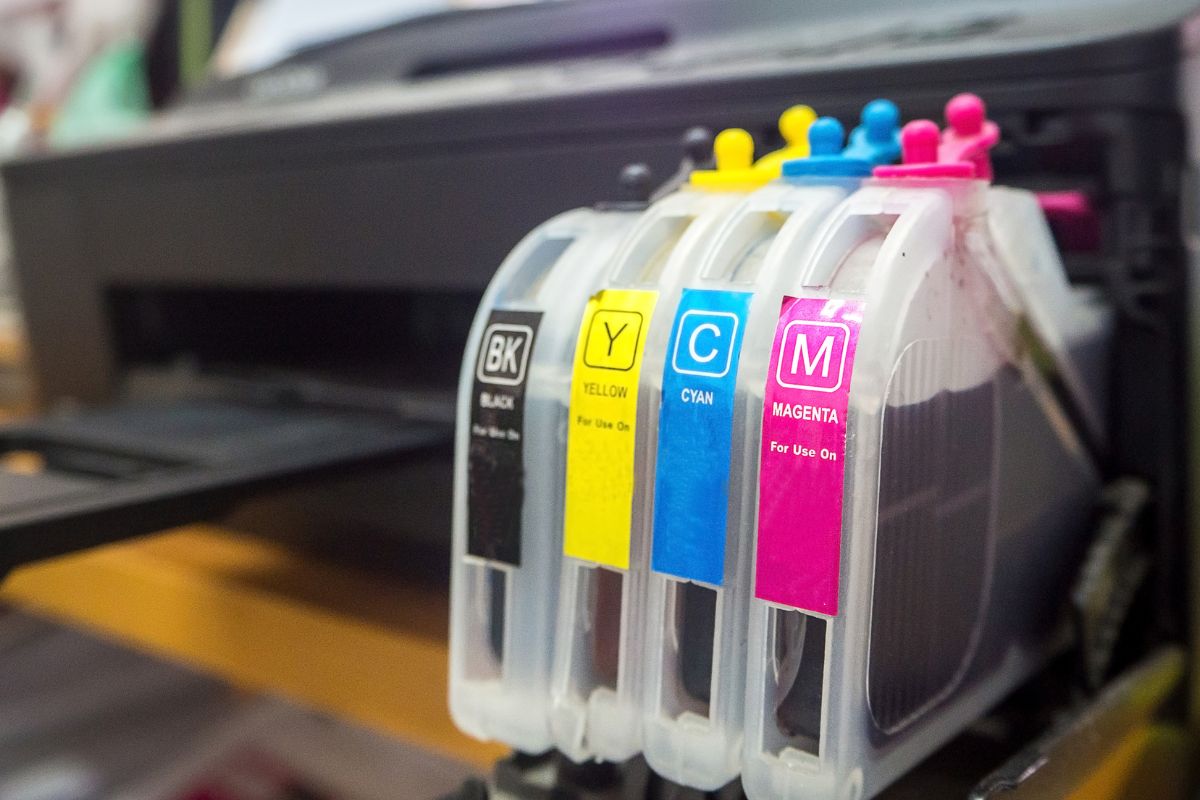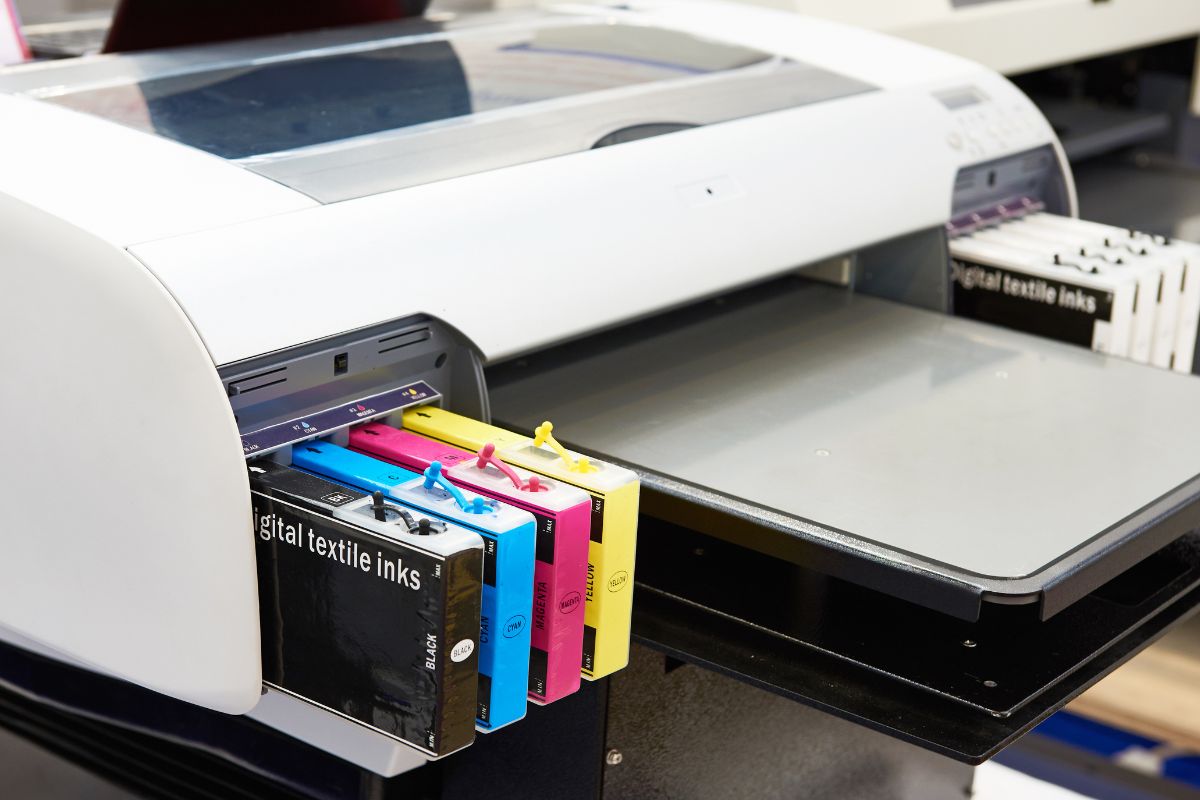CMYK codes are a cornerstone of color printing technology, where CMYK stands for Cyan, Magenta, Yellow, and Key (black). These four inks are the standard in the printing industry because they create a wide range of colors through a subtractive process. As you print, the inks lay on top of one another and absorb different wavelengths of light, the absence of color revealing the intended hue on the paper.
This methodology differs significantly from the RGB color model used in digital devices, which relies on adding light to produce color. The conversion from an RGB to a CMYK color space is a critical step in the process of professional printing. It ensures that the vivid colors you see on your monitor are translated as accurately as possible to the physical medium.
Understanding CMYK codes is essential if you are involved in any design work that requires printing. Whether you’re creating brochures, posters, or packaging, familiarity with CMYK will help you ensure that your designs maintain color fidelity from screen to print. This results in a high-quality final product that meets your color expectations.
Understanding CMYK Codes
When you explore the realm of digital and print design, understanding CMYK codes is essential for accurate color production. This section will arm you with a fundamental grasp of how CMYK codes are used in various applications, particularly in printing.
Basics of CMYK
The term CMYK stands for Cyan, Magenta, Yellow, and Key (Black). These four inks are the standard in the printing industry. Cyan, magenta, and yellow are primary colors that blend at varying levels to create a spectrum of hues. The “Key,” or black, is used for depth and detail.
- Cyan (C): ranges from 0-100%
- Magenta (M): ranges from 0-100%
- Yellow (Y): ranges from 0-100%
- Black (K): ranges from 0-100%
Your printer uses a combination of these CMYK values to create the full range of colors you see on the final printed material.
CMYK vs RGB Color Models
The CMYK color model is subtractive, meaning it subtracts brightness from white. In contrast, the RGB (Red, Green, Blue) model used in digital screens is additive; it adds light to black. RGB colors are ideal for devices emitting light but not for materials absorbing light, like paper. When preparing a design for print, converting from RGB to CMYK is a crucial step to ensure colors print as expected.
Subtractive Color Model
The subtractive color model works by removing wavelengths of light. In CMYK, layers of ink are applied to paper, each absorbing certain wavelengths and reflecting others. The inks subtract the brightness of white paper, resulting in the desired color:
- Cyan ink absorbs Red light
- Magenta ink absorbs Green light
- Yellow ink absorbs Blue light
This model shows why overlapping these inks leads to a reduced light reflection and, therefore, the creation of various colors.
CMYK Color Model in Printing
In color printing, the CMYK color model is standard. Printers create a full range of colors by layering cyan, magenta, yellow, and black inks in varying densities. This model is essential for producing accurate and consistent colors across different print runs. Colors in the CMYK spectrum can occasionally differ from their on-screen appearance due to the inherent differences in media and the subtractive color process.
By adjusting the CMYK values, you can control the exact output color:
- To darken colors, increase black (K) ink.
- For lighter colors, reduce the amount of CMY inks.
Every printer has a different color profile, affecting how it interprets CMYK codes, so a proof check is often recommended to ensure accuracy.
CMYK Color Codes and Conversion

In the realm of digital and printed media, understanding how to convert between various color codes is essential. Consistent color representation is achieved by using standardized color codes, particularly when converting between Hex, RGB, and CMYK values.
Hex to CMYK Conversion
When you need to convert Hexadecimal (Hex) codes, a six-digit combination of numbers and letters representing colors in web design, to CMYK (Cyan, Magenta, Yellow, Key/Black) color codes used for printing, you have to use an algorithm or a tool. Unlike the direct nature of RGB, CMYK values adjust the percentage of each ink used during the printing process.
- Example: Hex #FFFFFF → CMYK (0%, 0%, 0%, 0%)
RGB to CMYK Conversion
Your digital designs often start in RGB (Red, Green, Blue) format, which is ideal for on-screen display. Converting from RGB to CMYK is necessary for accurate print reproduction, as this process adjusts the color model to reflect physical ink limitations.
- Process: RGB values are transformed to reflect how much of each CMYK ink component is required.
Understanding Saturation and Hue
Saturation refers to the intensity of a color, with higher saturation equaling greater purity. Hue signifies the actual color visible in the spectrum. CMYK codes define the saturation and hue through the balance of their component percentages, impacting the final printed color.
- Key Point: A higher ‘Key’ component typically reduces saturation, influencing the resulting hue.
Color Code Standards
CMYK is governed by industry standards ensuring a consistent color output in printing processes. The standard for these color codes is based on the ISO 12647, setting guidelines to achieve the same color irrespective of the printing device or substrate.
- Fact: Adherence to CMYK standards is crucial for maintaining color fidelity across different print runs and materials.
Remember, accurate CMYK codes and conversion from hex and RGB affect the final quality of your printed materials. Always consider the underlining hue and saturation when adjusting CMYK values during the color conversion process for consistent results that meet your standard expectations.
Working with CMYK Colors

When you’re dealing with print media, understanding how to select and apply CMYK colors effectively is critical. CMYK colors are created with a subtractive process, where each color you add subtracts light from the white paper to create your desired hue.
Selecting CMYK Colors for Projects
Selecting the right CMYK colors for your project is pivotal for accurately conveying the visual look you envision. Think about the context in which your design will be used and consider how different shades will interact with each other and the white canvas. For example, adding more cyan, magenta, or yellow will darken the shade, while adding key (black) helps to achieve the full range from light colors to a solid black.
CMYK Swatches and Tools
Utilize CMYK swatches and digital tools to achieve precise color representation. Tools like Photoshop offer a CMYK preview mode, which helps in visualizing how colors from your RGB workspace will look once printed in CMYK. Digital color swatches provide a reference that allows you to anticipate how colors will mix and the resulting shade that will be printed.
Color Representation and Usage
Understanding color representation in CMYK is vital for consistent usage across your projects. White is represented as 0% of all CMYK ink colors (0,0,0,0), and shades of grey are created by balancing the CMYK values, typically by using equal amounts of cyan, magenta, and yellow with varying key values. Printing color swatches on your chosen paper can be a helpful practice to ensure the colors in your design match your expectations before moving to a larger print run.
Practical Applications of CMYK

CMYK color codes are fundamental in various industries, where precise color representation is necessary. You will often encounter CMYK in areas ranging from graphic design to marketing materials, each having its own distinct requirements for color accuracy and cost-effectiveness.
CMYK in Graphic Design
In graphic design, CMYK is the standard color model used to produce full-color documents, images, and artwork. By adjusting the percentage values of Cyan, Magenta, Yellow, and Key (black), you can achieve a broad spectrum of colors. When designing your graphics, especially for print, you must convert RGB files to CMYK to ensure color fidelity, as what you see on your monitor is not always what gets printed.
Marketing Materials and Print Media
When you create marketing materials such as brochures, flyers, or business cards, using CMYK color codes is crucial for consistency across all prints. These materials serve as the first impression of your brand; hence, color consistency ensures a professional look and helps in brand recognition. The ability to use full-color images makes CMYK an optimal choice for materials that demand visual appeal and attention to detail.
Cost Considerations in CMYK Printing
CMYK printing is often less expensive compared to other printing techniques, making it a suitable option for large-volume printing. However, you should consider the paper type and finish, as these can affect the final appearance and cost. For instance, glossy paper can make colors look more vibrant, but it’s typically more costly. When planning your print runs, balancing between quality and budget is essential for cost-effective print solutions.
Advanced Topics in CMYK Color
In the realm of CMYK color, mastering certain techniques and understanding color spaces further can be paramount for producing high-quality prints with precision.
Halftoning and Screening Techniques
Halftoning is the method you’ll use to simulate varying shades of colors with dots. In CMYK printing, dots of cyan, magenta, yellow, and black ink are placed strategically to create the illusion of a seamless image. Your ability to manage dot size and spacing during screening will affect the print’s final appearance. Screening decides how these dots are arranged, and advanced techniques such as stochastic screening can render images with finer detail and smoother gradations compared to traditional halftone methods.
Expanded and Compact Color Versions
Working with expanded versions of CMYK involves adding additional ink colors beyond the standard four primaries. This can produce a wider color gamut and more vibrant prints. Terms like CMYKOGV define an expanded system that includes orange, green, and violet. In contrast, a compact version of CMYK simplifies the color system, typically for cost efficiency or specific print contexts, possibly using fewer primaries or alternative black ink formulations for depth and intensity.
Color Calibration and Consistency
Your command over color calibration is crucial for maintaining color consistency across different devices and print runs. This process ensures that the colors you see on a monitor are as close as possible to those that emerge in print, addressing discrepancies due to different media or ambient lighting conditions. A calibrated color space respects the limitations and characteristics of black ink and primaries, adjusting outputs to match original design intentions accurately. Calibration is an iterative process, one that demands regular attention for professional print quality.
By embracing these advanced CMYK topics, you refine your printed materials to meet high standards of excellence, from nuanced art reproductions to precise brand color replication.
Digital and Web Usage of CMYK

When dealing with web design and digital platforms, you often work within the RGB color space, but there are instances where understanding CMYK is beneficial. Your knowledge of CMYK can affect the consistency of your designs across digital and print mediums.
Implementing CMYK on Websites
You might encounter scenarios where CMYK values are provided for brand colors. While web browsers inherently use RGB, it’s possible to convert CMYK codes to their closest RGB equivalents for web use. Use tools like Adobe Photoshop or Illustrator to convert the values, and then apply them to your website’s CSS.
CSS and HTML Color Codes
When coding your website, CSS and HTML color codes are typically defined in RGB or hexadecimal format. For instance:
/* CSS RGB Syntax */
element {
color: rgb(255, 0, 0); /* Red */
}
/* CSS Hexadecimal Syntax */
element {
color: #FF0000; /* Red */
}
Remember, a wide range of colors is at your disposal with RGB, and this gamut is what you’ll use in your CSS and HTML predominantly.
Color Lookup and Tools Online
A number of online tools can help you convert CMYK values to RGB or hexadecimal formats. These color lookup tools allow you to input CMYK values and get the code you need for digital use. Websites like ColorBrewer offer such services, with an emphasis on providing color schemes that are visually accessible to all users.
Frequently Asked Questions
These questions address common inquiries you might have regarding CMYK color codes and their application in both design and printing.
How can I convert RGB values to CMYK color codes?
To convert RGB values to CMYK color codes, you can use software like Adobe Photoshop or online conversion tools that require you to input the RGB values. These tools will calculate the corresponding CMYK values that best match for printing.
What is the process for generating a CMYK color code?
Generating a CMYK color code entails defining the percentages of cyan, magenta, yellow, and black inks needed to achieve the desired color when printed. Digital tools are available that can help you select colors and provide their CMYK codes.
How do I find the CMYK code for a specific color?
To find the CMYK code for a specific color, you can use a color picker tool in design software by selecting the color on your design file. Additionally, color palette tools can also provide you with the necessary CMYK codes for your selected colors.
What is the significance of the numbers in a CMYK color code?
The numbers in a CMYK color code represent the percentages of each ink (cyan, magenta, yellow, black) used. These numbers range from 0 to 100, indicating how much of each color is required to create the final color when printed.
Can you explain the difference between CMYK for printing and RGB for digital display?
CMYK is a subtractive color model used in color printing where colors are created by subtracting light using colored ink. In contrast, RGB is an additive color model used for digital displays, where colors are created by adding light with red, green, and blue lights.
How can I create a CMYK color palette for my design project?
To create a CMYK color palette, begin by selecting colors that are within the printable CMYK color space. Tools and software can aid in ensuring the colors you choose can be replicated accurately in print and to generate CMYK values for your palette.



